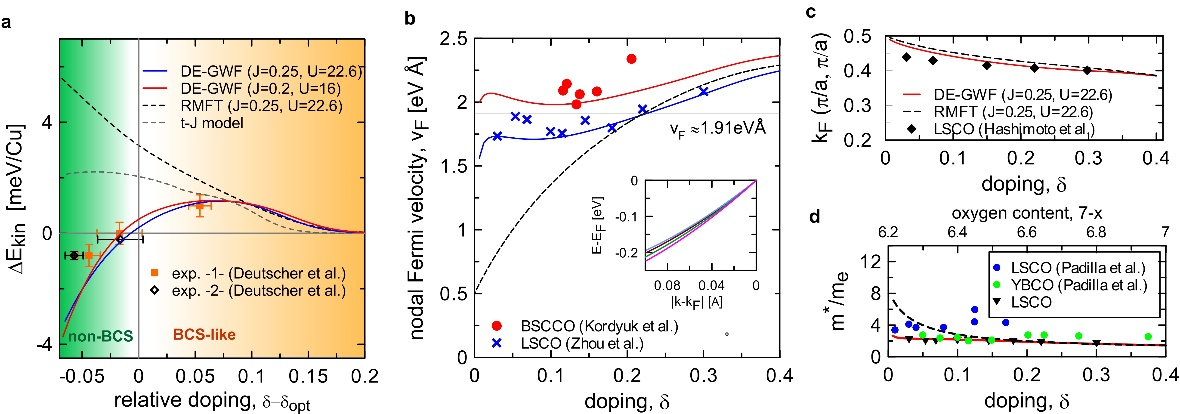Ongoing projects:
Fundamental Properties of Strongly Correlated Systems:
Strong Electronic Correlations, Unconventional Superconductivity,
and Topological Properties of Selected Quantum Materials - Project
OPUS
The project is concerned with physics of electronic properties of the strongly
correlated quantum matter. In those systems interaction between particles is decisively larger than the energies of individual particles. Hence, their dynamics is mutually correlated.
In effect, in those systems the interaction cannot be regarded as a perturbation of their individual behavior.
Rather, specific mathematical and advanced computer-guided methods must be implemented in order to pursue
a quantitative analysis of their measurable physical properties and compared
with the available experimental data. This is the reason why progress in this complex field is systematic,
but still under intensive debate.
[ Click here for more … ]
Representative results are displayed on the panel below.
 Fig. 1. Selected properties of high-Tc SC obtained within the one-band (t-J-U) model and its
comparison to experiment: Kinetic energy in SC phase (with the prominent non BCS feature marked)
(a), overall Fermi velocity (b), Fermi wave-vector of carriers (c), and effective mass of carriers (d); all
vs. hole doping. Only the full DE-GWF solution (solid curves) provides an excellent agreement
to experiment; the dashed curves - RMFT (SGA) solution, which clearly fails in the regime of light doping
(underdoped region). This comparison of methods/results illustrates clearly that we have to go
beyond RMFT in a systematic manner.
Fig. 1. Selected properties of high-Tc SC obtained within the one-band (t-J-U) model and its
comparison to experiment: Kinetic energy in SC phase (with the prominent non BCS feature marked)
(a), overall Fermi velocity (b), Fermi wave-vector of carriers (c), and effective mass of carriers (d); all
vs. hole doping. Only the full DE-GWF solution (solid curves) provides an excellent agreement
to experiment; the dashed curves - RMFT (SGA) solution, which clearly fails in the regime of light doping
(underdoped region). This comparison of methods/results illustrates clearly that we have to go
beyond RMFT in a systematic manner.
Macroscopic quantum effects, emergence, and quantum criticality in graphene and other Dirac systems - Project SONATA BIS
The aim of the project to understand, by developing the theoretical description starting from the effective Dirac Hamiltonian, the selected phenomena in graphene (or other Dirac systems), belonging to the class of macroscopic quantum effects. Such effects, binding material characteristics to fundamental constants and principles of quantum mechanics, offer powerful lenses through which to view the physics of condensed-matter systems, and are usually associated with exotic states of matter, such as superconductivity or superfluidity. Graphene, in which effective quasiparticles follow the Dirac rather then the Schroedinger equation, have provided novel examples of macroscopic quantum effects. These examples extend the collection of emergent phenomena in physics, as the systems build of nonrelativistic elements (e.g. carbon atoms at normal conditions) turn out to host relativistic quasiparticles. [ Click here for more … ]
